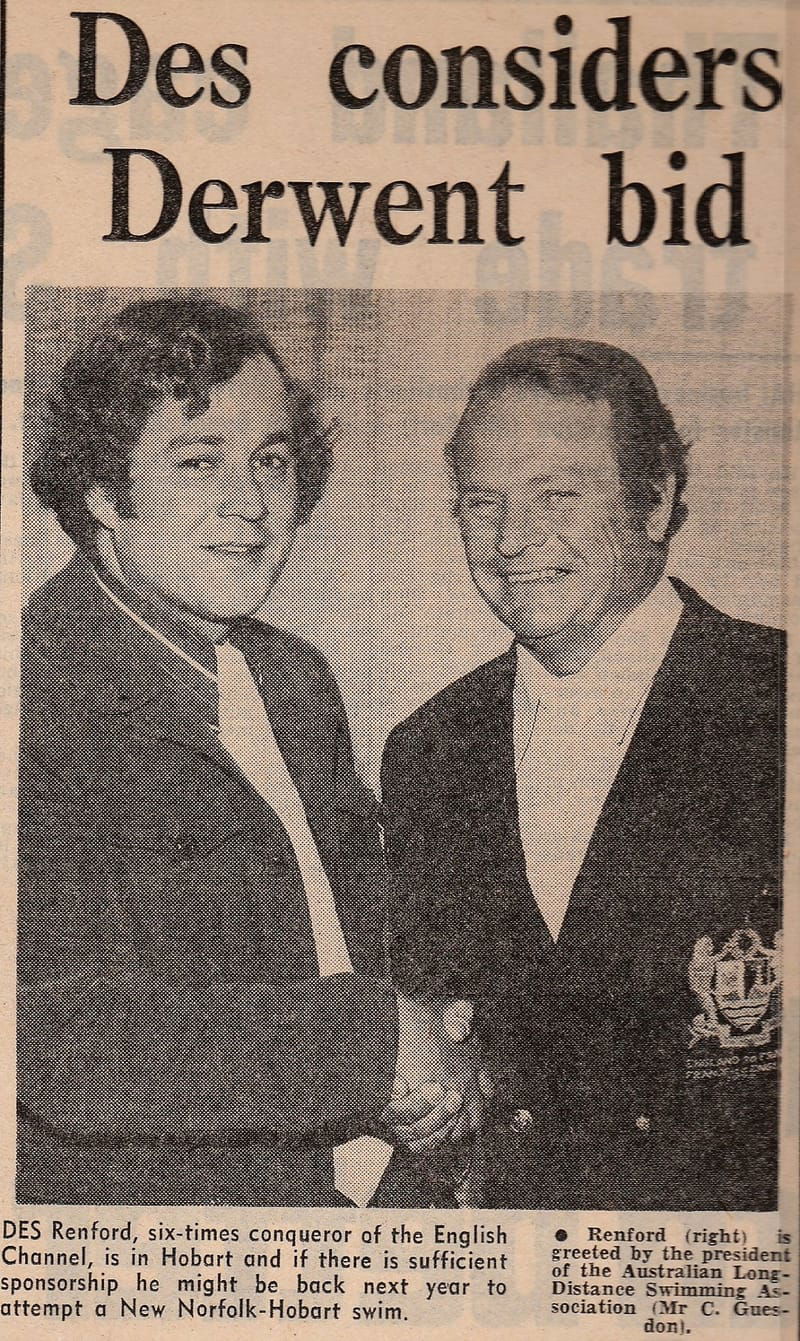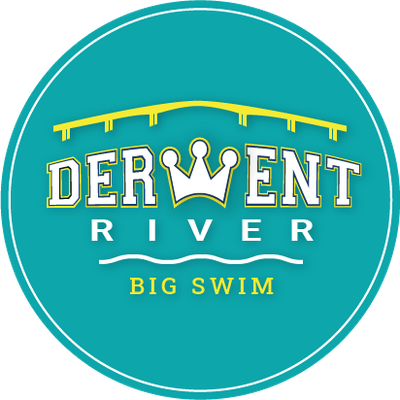History of the Derwent River Big Swim

There have been swimming events of various types and distances on the Derwent River since 1803 when Hobart was settled. These have been conducted by many swim clubs and individual organisations, namely regatta associations.
In Tasmania, the long-distance swims, the swimming marathons, were pioneered by Chris Guesdon in 1961
The Australian Long-Distance Swimming Federation was formed in 1973 in Hobart to facilitate recognition of the new sport as this was not forthcoming from the pool orientated national body.
The foundation members and subsequent office bearers were Chris Guesdon President, Deputy President Dick Campion, Secretary Sue Guesdon, John Koorey Executive Member
The body changed its name in 1980 to the Australian Marathon Swimming Federation.
John Koorey later became the President and the Australian Championships moved to Sydney, New South Wales.
The Australian Marathon Swimming Federation ran the national open water swimming titles until FINA and therefore Australian Swimming Inc. took over open water in 1986.
The first Australian Swimming Inc, Open Water Swimming Committee was set up in 1988.
Guesdon then became the Secretary of Australian Swimming’s National Open Water Swimming Committee and Koorey and Campion moved across as committee members of that national body.
From this beginning the movement of open water swimming was grabbing a foothold across the country. Health, fitness and elite competition programmes in open water and rather than swimming pools, were flourishing and here to stay
In 2018 there were as many individuals swimming in hundreds of separate events in Australia in open water competitions as there were members in pool swimming clubs. These numbers didn’t include those plunging into the open water on their own as an activity for health and fitness reasons.
In subsequent years many other nations and individual hallmark events followed the Australian lead and national and world bodies were formed
- The Big Swim Derwent River Marathon
New Norfolk to Hobart – New Norfolk Bridge to Tasman Bridge 34km.
The Big Swim Derwent River in Hobart is considered one of the most difficult marathons to complete. The varying weather patterns can be extreme. Southerly weather brings winds from the great Southern Ocean via Storm Bay. The Derwent is a tidal river with the fresh water from the source and salt-water stretching upriver for 20kms.
Pioneer marathon swimmer Chris Guesdon was the first to challenge the course on Australia Day 1973
The late, legendary Des Renford from Maroubra SLSC was the first to complete the distance on 25th January 1975. His time was 10h 54m.
Dick Campion set the fastest time in 1976. His time: 9h 19m.
Des Renford, Dick Campion and Chris Guesdon are all Honourees inducted into the International Marathon Swimming Hall of Fame. Sue Guesdon who has been a handler and administrator since the inaugural event in 1973 is an Honouree in the International Marathon Swimming Hall of Fame. Des Renford was inducted into the ISHOF in 2016.
There have been swimming events of various types and distances on the Derwent River since 1803 when Hobart was settled. These have been conducted by many swim clubs and individual organisations, namely regatta associations.
In Tasmania, the long-distance swims, the swimming marathons, were pioneered by Chris Guesdon in 1961
The Australian Long-Distance Swimming Federation was formed in 1973 in Hobart to facilitate recognition of the new sport as this was not forthcoming from the pool orientated national body.
The foundation members and subsequent office bearers were Chris Guesdon President, Deputy President Dick Campion, Secretary Sue Guesdon, John Koorey Executive Member
The body changed its name in 1980 to the Australian Marathon Swimming Federation.
John Koorey later became the President and the Australian Championships moved to Sydney, New South Wales.
The Australian Marathon Swimming Federation ran the national open water swimming titles until FINA and therefore Australian Swimming Inc. took over open water in 1986.
The first Australian Swimming Inc, Open Water Swimming Committee was set up in 1988.
Guesdon then became the Secretary of Australian Swimming’s National Open Water Swimming Committee and Koorey and Campion moved across as committee members of that national body.
From this beginning the movement of open water swimming was grabbing a foothold across the country. Health, fitness and elite competition programmes in open water and rather than swimming pools, were flourishing and here to stay
In 2018 there were as many individuals swimming in hundreds of separate events in Australia in open water competitions as there were members in pool swimming clubs. These numbers didn’t include those plunging into the open water on their own as an activity for health and fitness reasons.
In subsequent years many other nations and individual hallmark events followed the Australian lead and national and world bodies were formed
.
